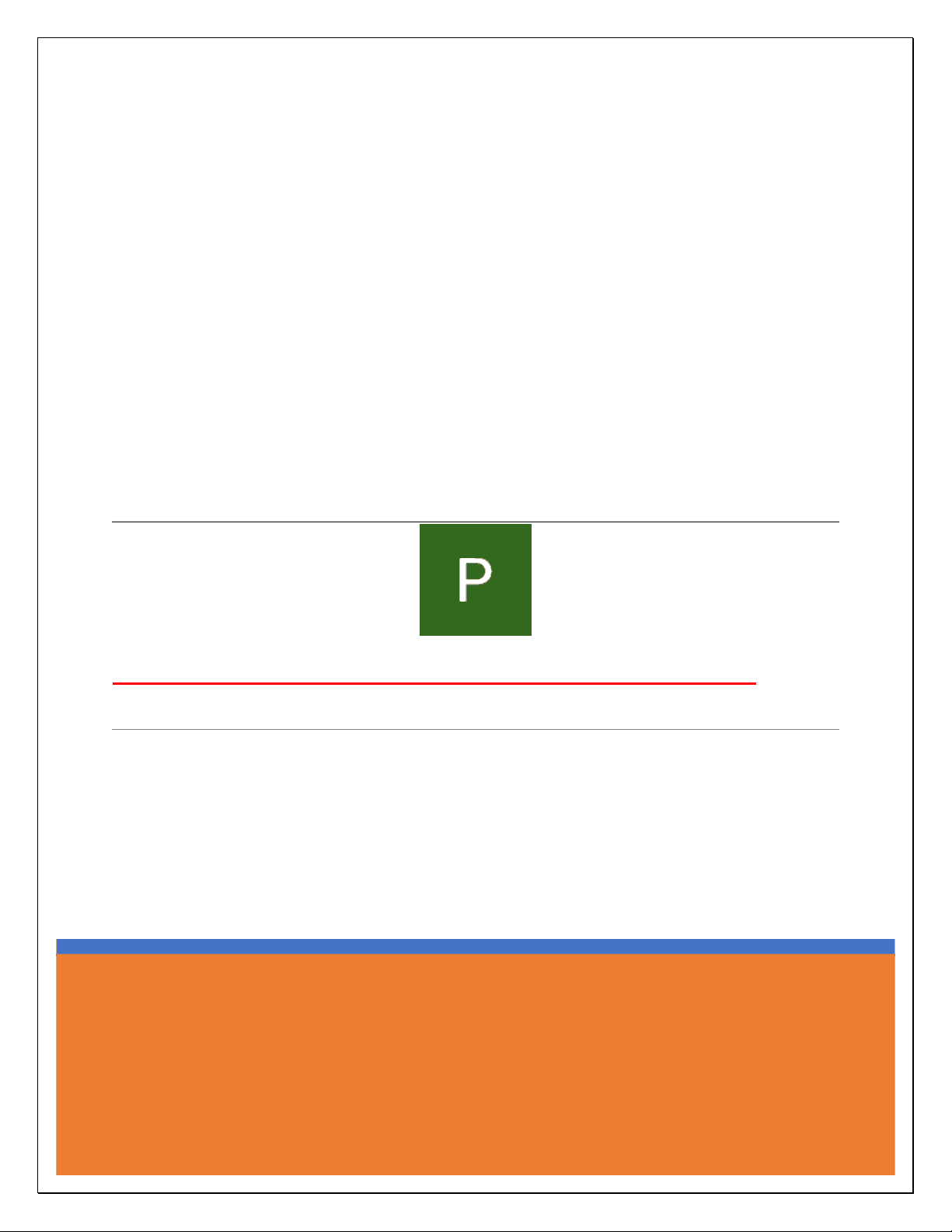
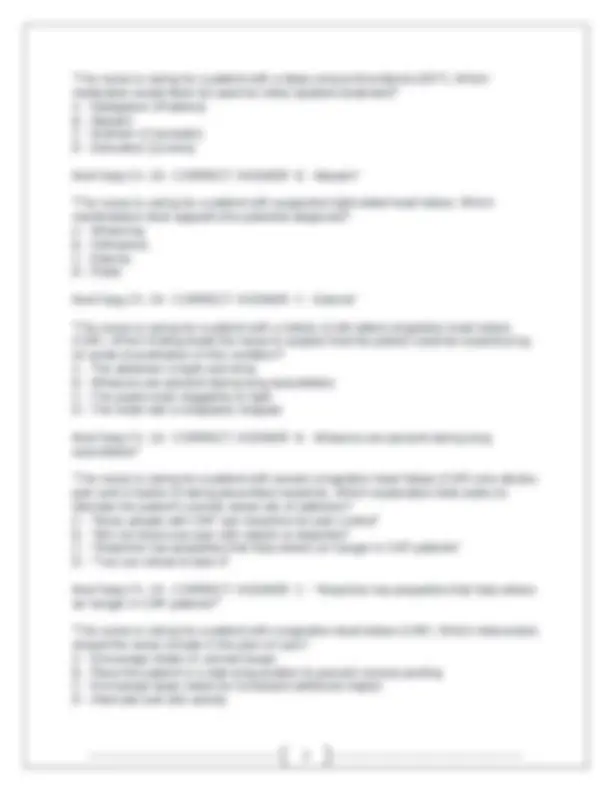
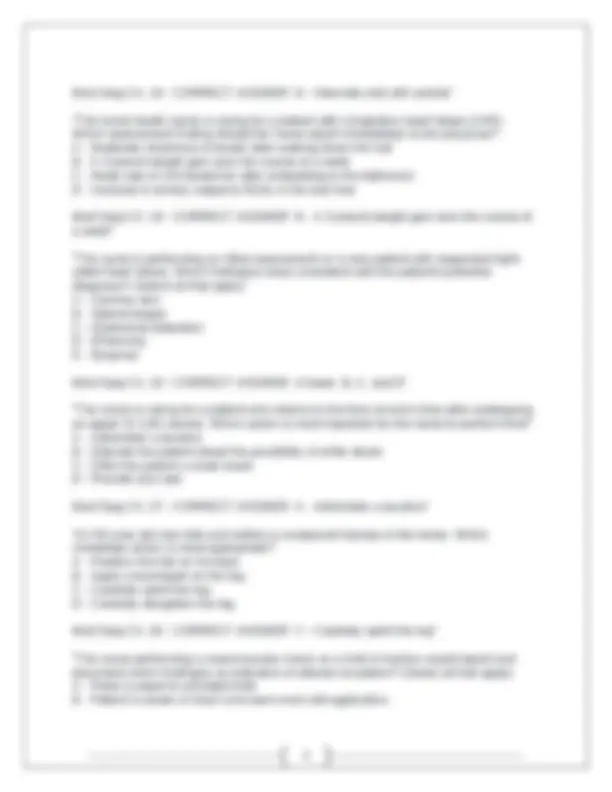
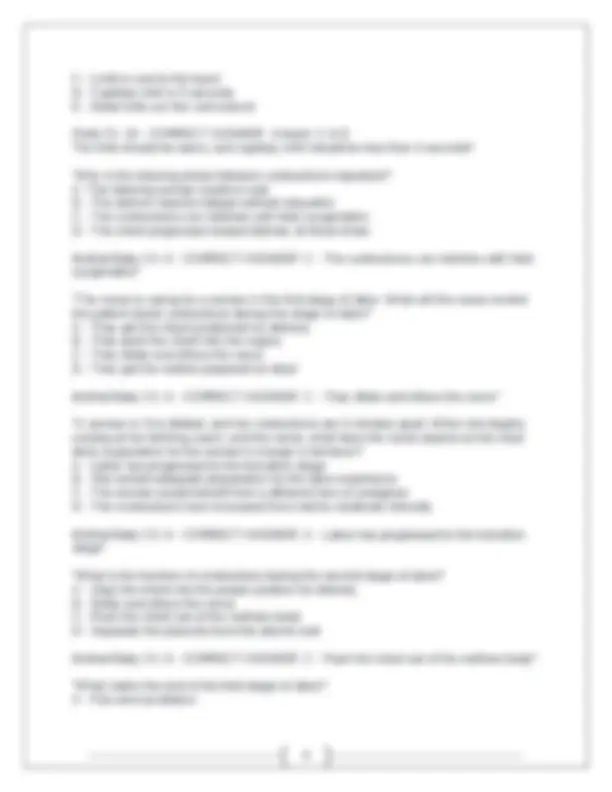
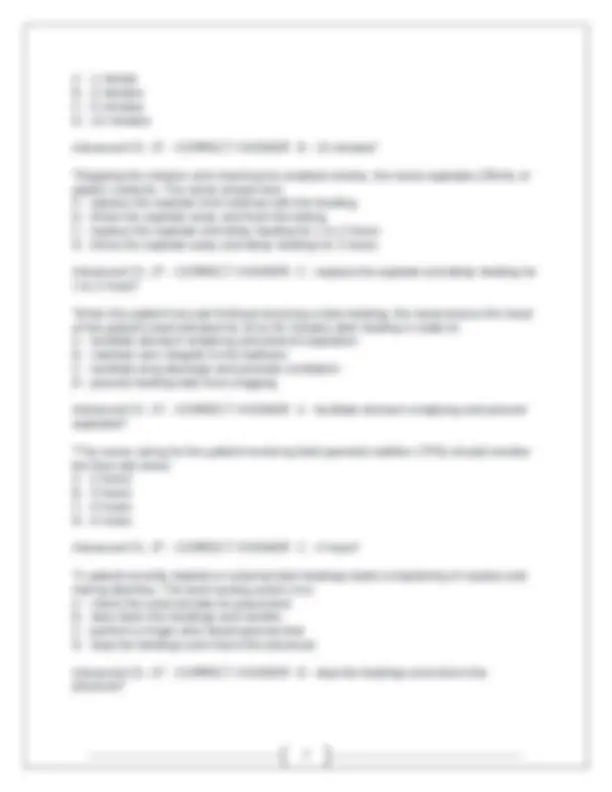
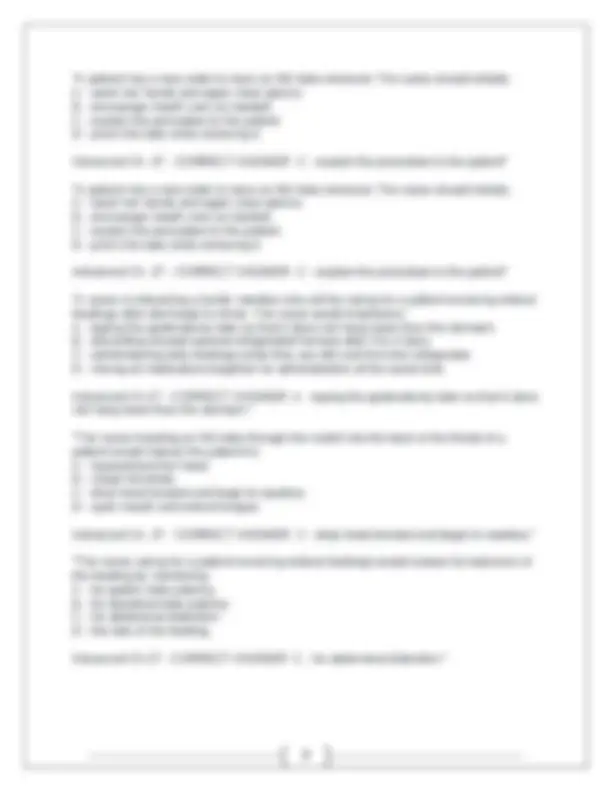
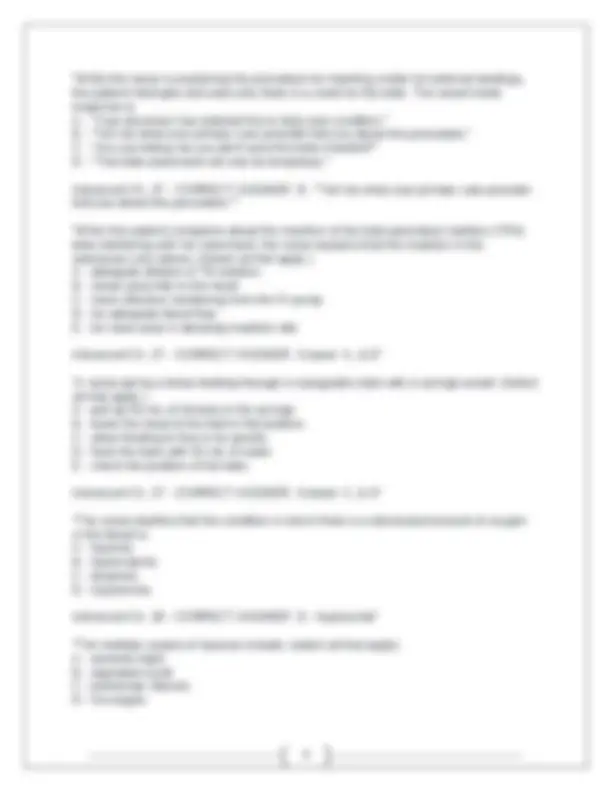
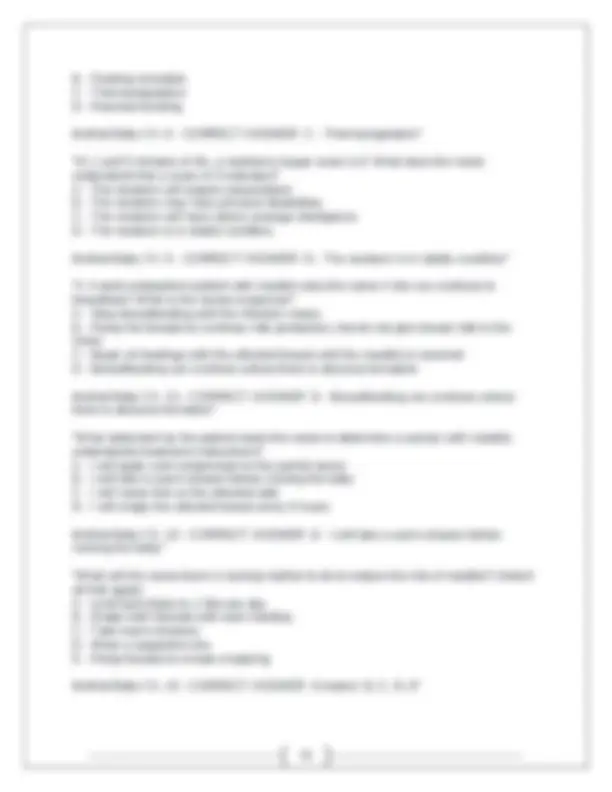
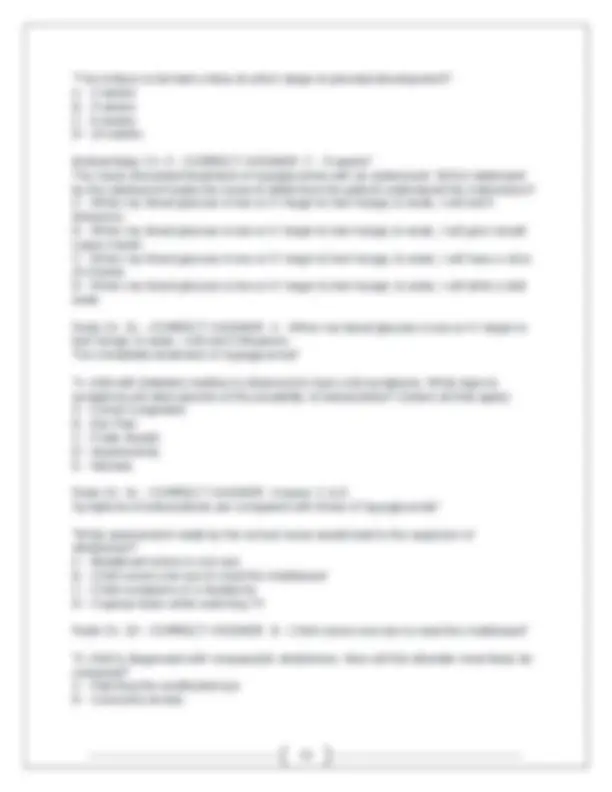
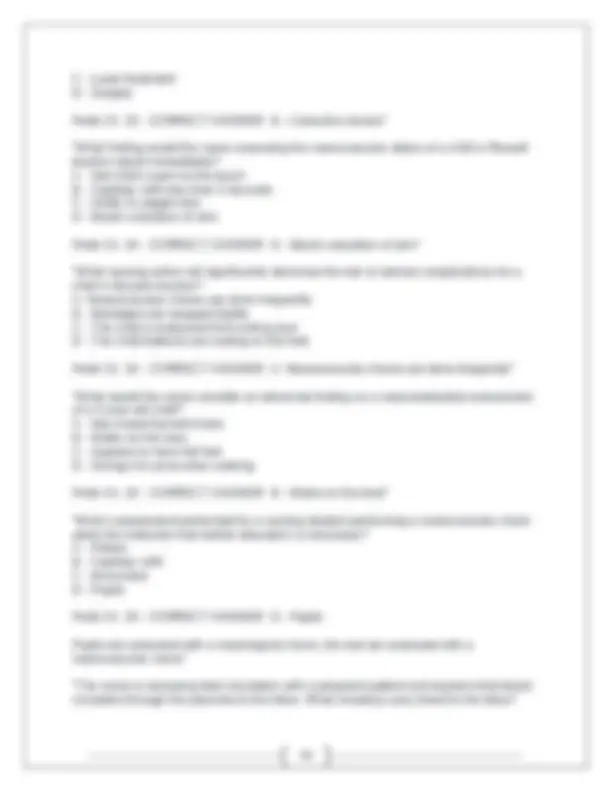
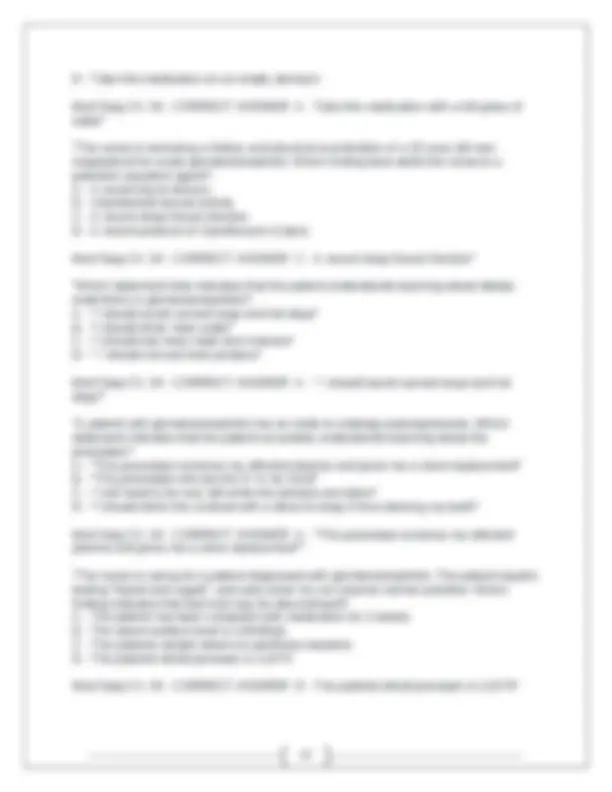
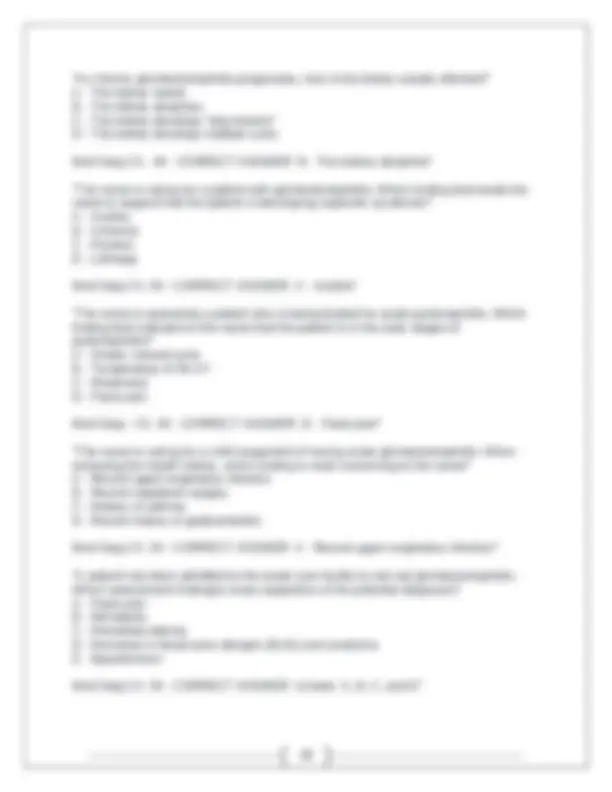
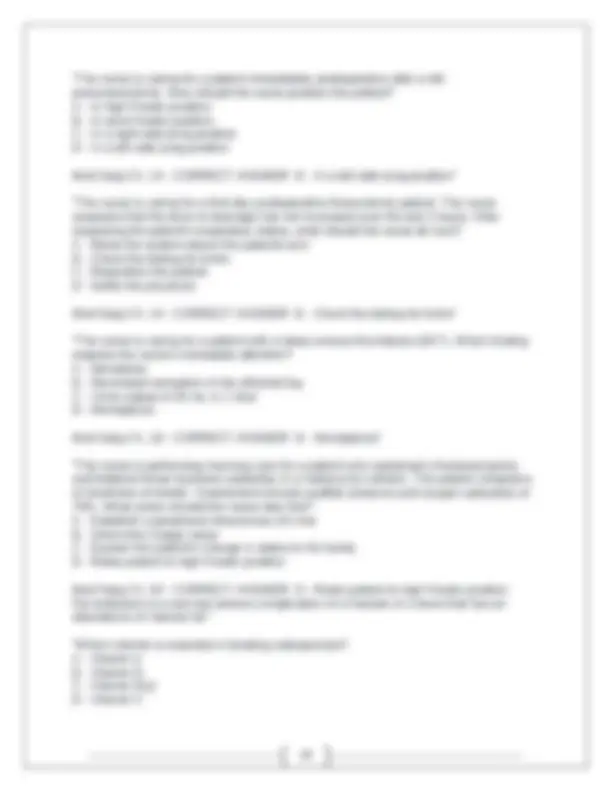
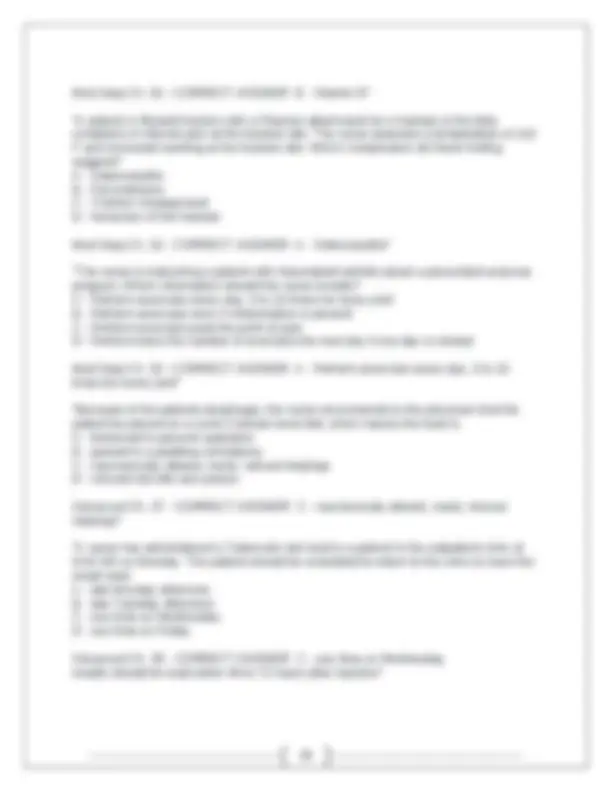
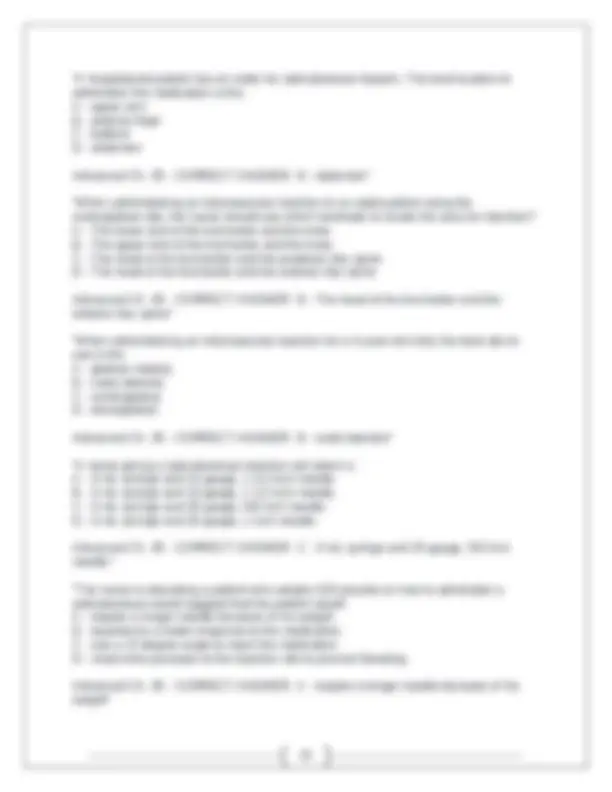
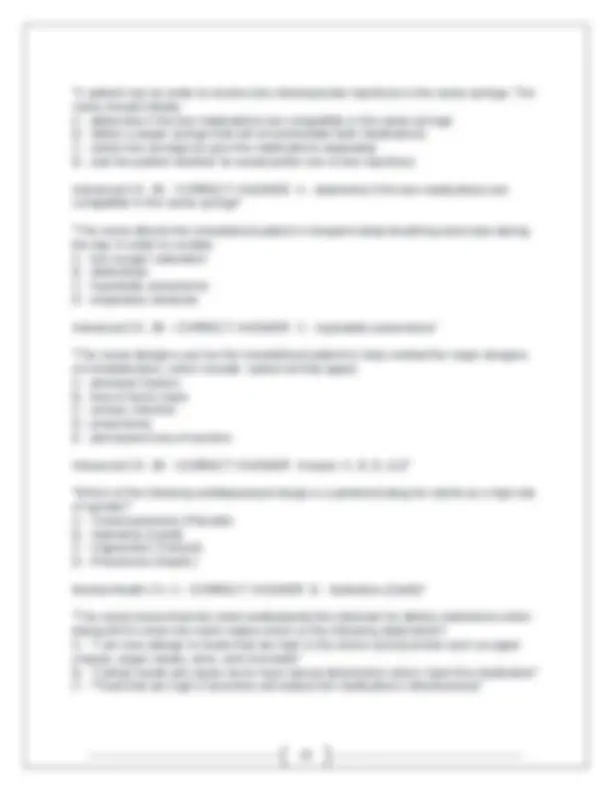
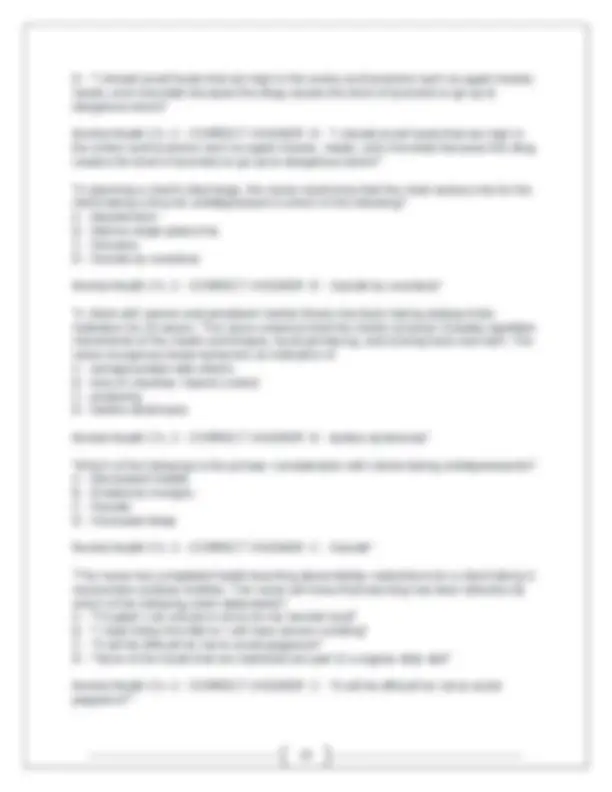
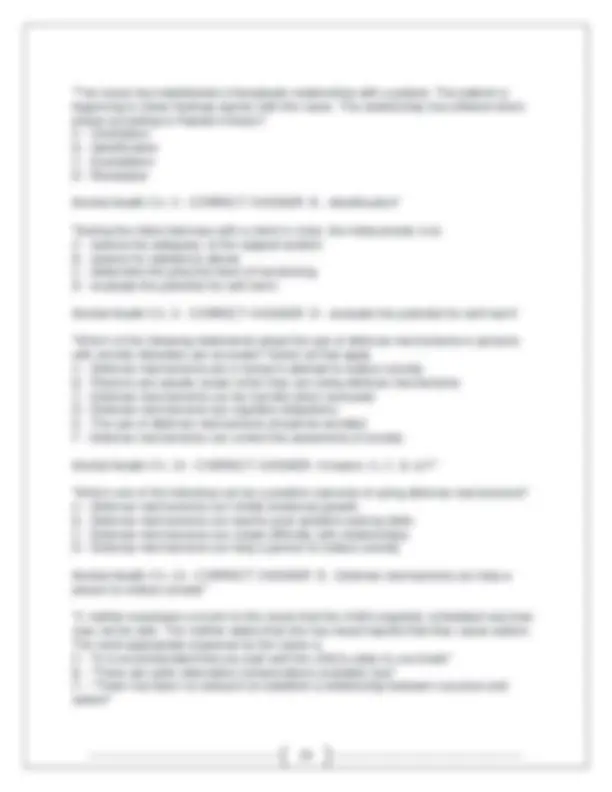
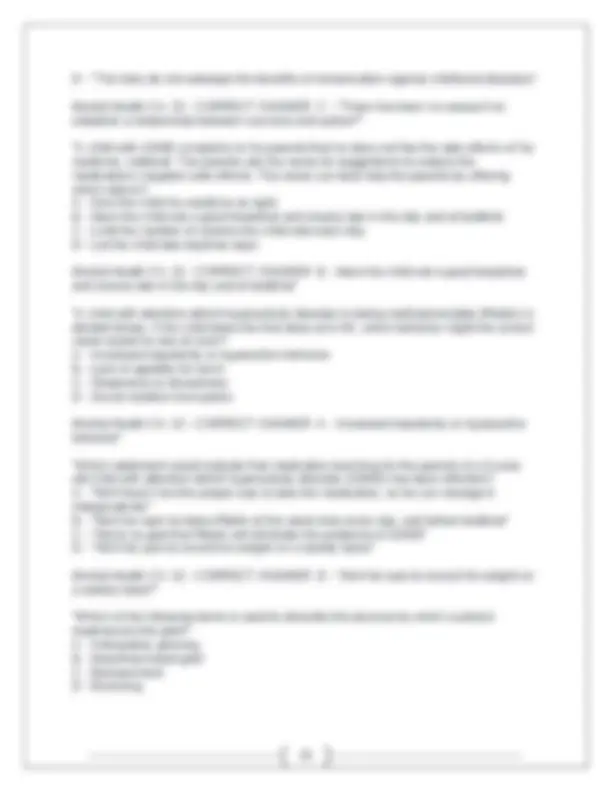
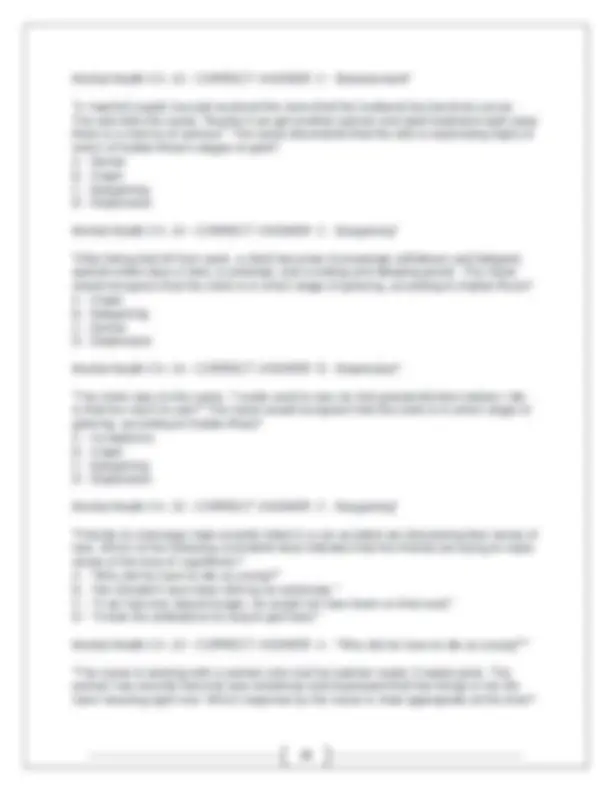
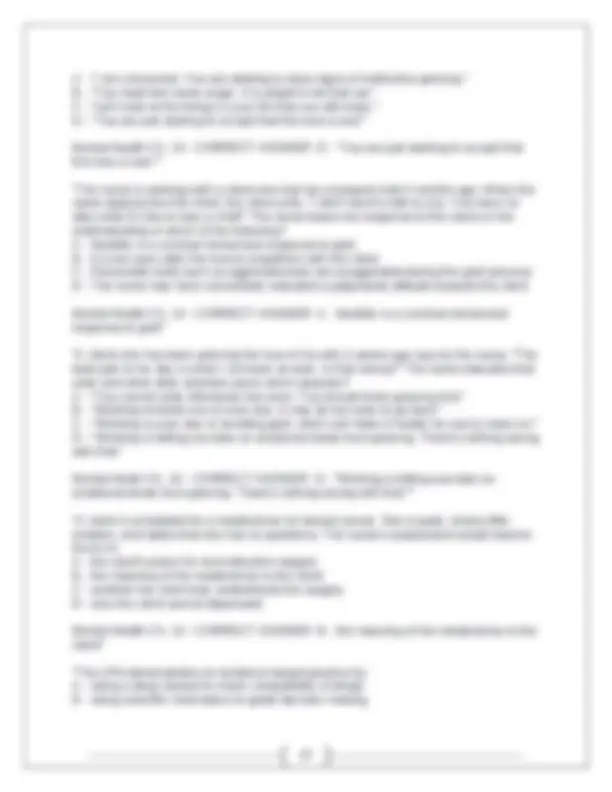
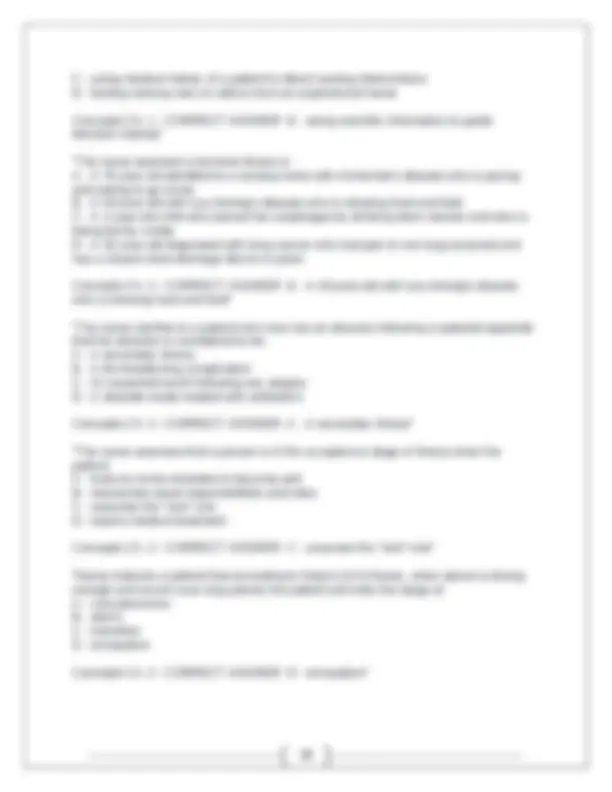
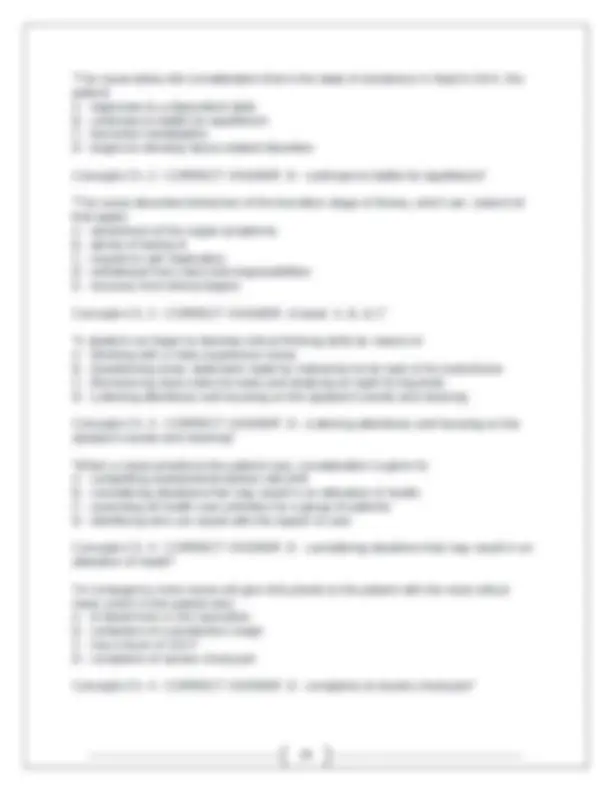
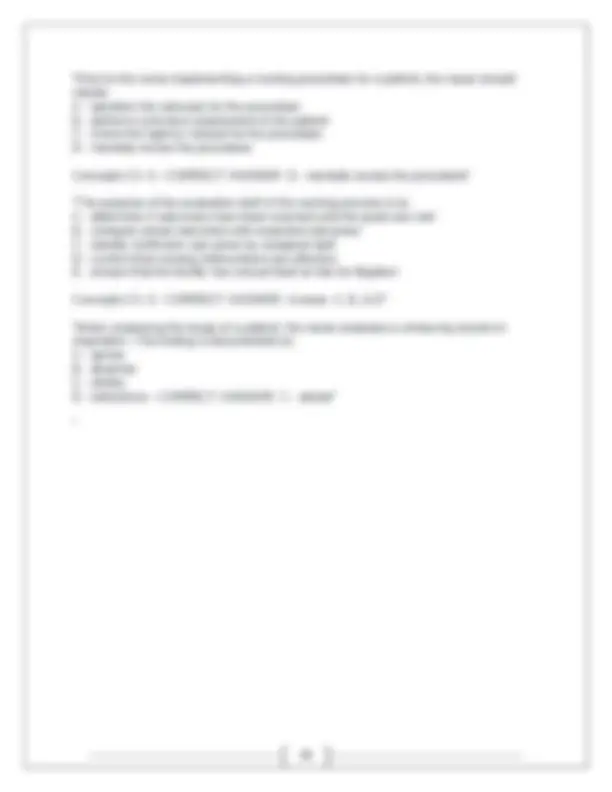


Study with the several resources on Docsity

Earn points by helping other students or get them with a premium plan


Prepare for your exams
Study with the several resources on Docsity

Earn points to download
Earn points by helping other students or get them with a premium plan
Community
Ask the community for help and clear up your study doubts
Discover the best universities in your country according to Docsity users
Free resources
Download our free guides on studying techniques, anxiety management strategies, and thesis advice from Docsity tutors
A series of multiple-choice questions covering key concepts in medical-surgical, pediatric, and maternal-newborn nursing. the questions assess knowledge of various conditions, treatments, and nursing interventions, providing a valuable resource for students preparing for licensing exams or seeking to reinforce their understanding of core nursing principles. each question includes the correct answer and its rationale, facilitating self-assessment and learning.
Typology: Exams
1 / 31

This page cannot be seen from the preview
Don't miss anything!
























Med Surg Ch. 19 - CORRECT ANSWER D - Alternate rest with activity" "The home health nurse is caring for a patient with congestive heart failure (CHF). Which assessment finding should the nurse report immediately to the physician? A - Moderate shortness of breath after walking down the hall B - A 3 pound weight gain over the course of a week C - Heart rate of 104 beats/min after ambulating to the bathroom D - Increase in urinary output to 50mL in the last hour Med Surg Ch. 19 - CORRECT ANSWER B - A 3 pound weight gain over the course of a week" "The nurse is performing an initial assessment on a new patient with suspected right- sided heart failure. Which finding(s) is/are consistent with the patient's potential diagnosis? (Select all that apply) A - Clammy skin B - Splenomegaly C - Abdominal distention D - Wheezing E - Dyspnea Med Surg Ch. 19 - CORRECT ANSWER Answer: B, C, and E" "The nurse is caring for a patient who returns to the floor at lunch time after undergoing an upper GI (UGI series). Which action is most important for the nurse to perform first? A - Administer a laxative B - Educate the patient about the possibility of white stools C - Offer the patient a small snack D - Provide oral care Med Surg Ch. 27 - CORRECT ANSWER A - Administer a laxative" "An 80 year old man falls and suffers a compound fracture of the femur. Which immediate action is most appropriate? A - Position him flat on his back B - Apply a tourniquet on the leg C - Carefully splint the leg D - Carefully straighten the leg Med Surg Ch. 32 - CORRECT ANSWER C - Carefully splint the leg" "The nurse performing a neurovascular check on a limb in traction would report and document which finding(s) as indicative of altered circulation? (Select all that apply) A - Pulse is equal to uncasted limb B - Patient is aware of touch and warm and cold application
C - Limb is cool to the touch D - Capillary refill is 5 seconds E - Distal limb can flex and extend Peds Ch. 24 - CORRECT ANSWER Answer: C & D The limb should be warm, and capillary refill should be less than 3 seconds" "Why is the relaxing phase between contractions important? A -The laboring woman needs to rest B - The uterine muscles fatigue without relaxation C - The contractions can interfere with fetal oxygenation D - The infant progresses toward delivery at these times Mother/Baby Ch. 6 - CORRECT ANSWER C - The contractions can interfere with fetal oxygenation" "The nurse is caring for a woman in the first stage of labor. What will the nurse remind the patient about contractions during this stage of labor? A - They get the infant positioned for delivery B - They push the infant into the vagina C - They dilate and efface the cervix D - They get the mother prepared for labor Mother/Baby Ch. 6 - CORRECT ANSWER C - They dilate and efface the cervix" "A woman is 7cm dilated, and her contractions are 3 minutes apart. When she begins cursing at her birthing coach, and the nurse, what does the nurse assess as the most likely explanation for the woman's change in behavior? A - Labor has progressed to the transition stage B - She lacked adequate preparation for the labor experience C - The woman would benefit from a different form of analgesia D - The contractions have increased from mild to moderate intensity Mother/Baby Ch. 6 - CORRECT ANSWER A - Labor has progressed to the transition stage" "What is the function of contractions during the second stage of labor? A - Align the infant into the proper position for delivery B - Dilate and efface the cervix C - Push the infant out of the mothers body D - Separate the placenta from the uterine wall Mother/Baby Ch. 6 - CORRECT ANSWER C - Push the infant out of the mothers body" "What marks the end of the third stage of labor? A - Full cervical dilation
B - Skin is peeling on several parts of the infants body C - There is a small pink patch on the left eyelid and one on the neck D - Today, the infants skin has a yellowish tinge Mother/Baby Ch. 6 - CORRECT ANSWER D - Today, the infants skin has a yellowish tinge" "What does the nurse note when measuring the frequency of a laboring woman's contractions? A - How long the patient states the contractions last B - The time between the end of one contraction and the beginning of the next C - The time between the beginning and end of one contraction D - The time between the beginning of one contraction to the beginning of the next Mother/Baby Ch. 6 - CORRECT ANSWER D - The time between the beginning of one contraction to the beginning of the next" "At a prenatal visit, a primigravida asks the nurse how she will know her labor has started. The nurse knows that what indicates the beginning of true labor? A - Contractions that are relieved by walking B - Discomfort in the abdomen and groin C - A decrease in vaginal discharge D - Regular contractions becoming more frequent and more intense Mother/Baby Ch. 6 - CORRECT ANSWER D - Regular contractions becoming more frequent and more intense" "A nurse positions a patient for the insertion of a nasogastric (NG) tube by: A - turning the patient to a right side lying position B - sitting the patient upright and hyperextending the patients head C - lowering the head of the bed to a flat position D - raising the head of the bed to 30 degrees Advanced Ch. 27 - CORRECT ANSWER B - sitting the patient upright and hyperextending the patients head" "The nurse who is preparing to give a feeding per a nasogastric (NG) tube tests the placement of the tube most safely by: A - checking the lungs for rhonchi B - instilling 10mL of sterile water and checking for cough C - aspirating stomach contents D - injecting 20mL of air and listen at the tip of the xiphoid Advanced Ch. 27 - CORRECT ANSWER C - aspirating stomach contents" "A patient is scheduled to receive an intermittent tube feeding. This feeding should be allowed to flow in over how many minutes?
A - 1 minute B - 2 minutes C - 5 minutes D - 10 minutes Advanced Ch. 27 - CORRECT ANSWER D - 10 minutes" "Stopping the infusion and checking for residual volume, the nurse aspirates 250mL of gastric contents. The nurse should next: A - replace the aspirate and continue with the feeding B - throw the aspirate away and flush the tubing C - replace the aspirate and delay feeding for 1 to 2 hours D - throw the aspirate away and delay feeding for 2 hours Advanced Ch. 27 - CORRECT ANSWER C - replace the aspirate and delay feeding for 1 to 2 hours" "When the patient has just finished receiving a tube feeding, the nurse leaves the head of the patient's bed elevated for 30 to 60 minutes after feeding in order to: A - facilitate stomach emptying and prevent aspiration B - maintain skin integrity to the buttocks C - facilitate lung drainage and promote ventilation D - prevent feeding tube from clogging Advanced Ch. 27 - CORRECT ANSWER A - facilitate stomach emptying and prevent aspiration" "The nurse caring for the patient receiving total parental nutrition (TPN) should monitor the flow rate every: A - 2 hours B - 3 hours C - 4 hours D - 6 hours Advanced Ch. 27 - CORRECT ANSWER C - 4 hours" "A patient recently started on external tube feedings starts complaining of nausea and having diarrhea. The best nursing action is to: A - check the external tube for placement B - slow down the feedings and monitor C - perform a finger stick blood glucose test D - stop the feedings and inform the physician Advanced Ch. 27 - CORRECT ANSWER D - stop the feedings and inform the physician"
"While the nurse is explaining the procedure for inserting a tube for external feedings, the patient interrupts and asks why there is a need for this tube. The nurse's best response is: A - "Your physician has ordered this to help your condition." B - "Tell me what your primary care provider told you about this procedure." C - "Are you telling me you don't want this tube inserted?" D - "This tube placement will only be temporary." Advanced Ch. 27 - CORRECT ANSWER B - "Tell me what your primary care provider told you about this procedure."" "When the patient complains about the insertion of the total parenteral nutrition (TPN) tube interfering with his movement, the nurse explains that the insertion in the subclavian vein allows: (Select all that apply.) A - adequate dilution of TN solution. B - closer proximity to the heart. C - more effective monitoring from the IV pump. D - for adequate blood flow. E - for more ease in dressing insertion site. Advanced Ch. 27 - CORRECT ANSWER Answer: A, & D" "A nurse giving a bolus feeding through a nasogastric tube with a syringe would: (Select all that apply.) A - pull up 50 mL of formula in the syringe. B - lower the head of the bed to flat position. C - allow feeding to flow in by gravity. D - flush the tube with 50 mL of water. E - check the position of the tube. Advanced Ch. 27 - CORRECT ANSWER Answer: C, & E" "The nurse elarifies that the condition in which there is a decreased amount of oxygen in the blood is: A - hypoxia. B - hypercapnia. C - dyspnea. D - hypoxemia. Advanced Ch. 28 - CORRECT ANSWER D - hypoxemia" "The multiple causes of hypoxia include: (select all that apply) A - extreme fright B - aspirated vomit C - pulmonary fibrosis D - hiccoughs
E - high altitude Advanced Ch. 28 - CORRECT ANSWER Answer: B, C, & E" "A patient has an order for a nitroglycerin transdermal patch. The best way to ensure proper administration of this medication is to: A - apply it behind the ear B - rotate sites to avoid skin irritation C - place it over a hairy skin area D - put the initials on patch when applied Advanced Ch. 34 - CORRECT ANSWER B - rotate sites to avoid skin irritation" "The nurse administering nitroglycerin ointment to a patient will: A - apply with gloves or tongue blade B - apply in same area as the old patch C - place the paste on the chest and massage it in the skin D - inform the patient that the medicinal effect will take about 45 minutes Advanced Ch. 34 - CORRECT ANSWER A - apply with gloves or tongue blade" "When the 8-year-old child complains that he does not want to have a "shot," the nurse explains that the use of a parenteral route: A - is the best way to give medicine. B - will hasten the action of the medication. C - will take less medicine to make him well. D - will be painless because the needles are so sharp. Advanced Ch. 35 - CORRECT ANSWER B - will hasten the action of the medication." "To ensure the proper administration of a tuberculin test, the nurse will: A - use a 3 mL syringe. B - choose a 21 gauge, 1 inch needle. C - insert the needle at a 30-degree angle. D - inject slowly to form a bleb. Advanced Ch. 35 - CORRECT ANSWER D - inject slowly to form a bleb." "The best angle to insert the needle when administering a subcutaneous injection is at an angle of: A - 45 to 90 degrees. B - 30 to 45 degrees. C - 15 to 30 degrees. D - 5 to 15 degrees. Advanced Ch. 35 - CORRECT ANSWER A - 45 to 90 degrees."
B - Feeding schedule C - Thermoregulation D - Parental bonding Mother/Baby Ch. 6 - CORRECT ANSWER C - Thermoregulation" "At 1 and 5 minutes of life, a newborns Apgar score is 9. What does the nurse understand that a score of 9 indicates? A - The newborn will require resuscitation B - The newborn may have physical disabilities C - The newborn will have above average intelligence D - The newborn is in stable condition Mother/Baby Ch. 6 - CORRECT ANSWER D - The newborn is in stable condition" "A 4 week postpartum patient with mastitis asks the nurse if she can continue to breastfeed. What is the nurses response? A - Stop breastfeeding until the infection clears B - Pump the breasts to continue milk production, but do not give breast milk to the infant C - Begin all feedings with the affected breast until the mastitis is resolved D - Breastfeeding can continue unless there is abscess formation Mother/Baby Ch. 10 - CORRECT ANSWER D - Breastfeeding can continue unless there is abscess formation" "What statement by the patient leads the nurse to determine a woman with mastitis understands treatment instructions? A - I will apply cold compresses to the painful areas B - I will take a warm shower before nursing the baby C - I will nurse first on the affected side D - I will empty the affected breast every 8 hours Mother/Baby Ch. 10 - CORRECT ANSWER B - I will take a warm shower before nursing the baby" "What will the nurse teach a nursing mother to do to reduce the risk of mastitis? (Select all that apply) A - Limit fluid intake to 1 liter per day B - Empty both breasts with each feeding C - Take warm showers D - Wear a supportive bra E - Pump breasts to ensure emptying Mother/Baby Ch. 10 - CORRECT ANSWER Answers: B, C, D, E"
"The embryo is termed a fetus at which stage of prenatal development? A - 2 weeks B - 4 weeks C - 9 weeks D - 16 weeks Mother/Baby Ch. 3 - CORRECT ANSWER C - 9 weeks" The nurse discussed treatment of hypoglycemia with an adolescent. Which statement by the adolescent leads the nurse to determine the patient understood the instructions? A - When my blood glucose is low or if I begin to feel hungry & weak, I will eat 6 lifesavers B - When my blood glucose is low or if I begin to feel hungry & weak, I will give myself Lispro insulin C - When my blood glucose is low or if I begin to feel hungry & weak, I will have a slice of cheese D - When my blood glucose is low or if I begin to feel hungry & weak, I will drink a diet soda Peds Ch. 31 - CORRECT ANSWER A - When my blood glucose is low or if I begin to feel hungry & weak, I will eat 6 lifesavers The immediate treatment of hypoglycemia" "A child with diabetes mellitus is observed to have cold symptoms. What signs & symptoms will alert parents of the possibility of ketoacidosis? (Select all that apply) A - Chest Congestion B - Ear Pain C - Fruity Breath D - Hyperactivity E - Nausea Peds Ch. 31 - CORRECT ANSWER Answer: C & E Symptoms of ketoacidosis are compared with those of hypoglycemia" "What assessment made by the school nurse would lead to the suspicion of strabismus? A - Reddened sclera in one eye B - Child covers one eye to read the chalkboard C - Child complains of a headache D - Copious tears while watching TV Peds Ch. 23 - CORRECT ANSWER B - Child covers one eye to read the chalkboard" "A child is diagnosed with nonparalytic strabismus. How will this disorder most likely be corrected? A - Patching the unaffected eye B - Corrective lenses
A - One umbilical vein B - Two umbilical veins C - One umbilical artery D- Two umbilical arteries Mother/Baby Ch. 3 - CORRECT ANSWER A - One umbilical vein" "A patient asks the nurse when her infants heart will begin to pump blood. What will the nurse reply? A - By the end of week 3 B - Beginning in week 8 C - At the end of week 16 D - Beginning in week 24 Mother/Baby Ch. 3 - CORRECT ANSWER A - By the end of week 3" "A woman who is 25 weeks pregnant asks the nurse what her fetus looks like. What does the nurse explain is one physical characteristic present in a 25 week old fetus? A - Lanugo covering the body B - Constant motion C - Skin that is pink and moist D - Eyes that are closed Mother/Baby Ch. 3 - CORRECT ANSWER A - Lanugo covering the body By 25 weeks the eyes are open, skin is wrinkled, and fetus has definite periods of movement" "At what point in prenatal development do the lungs begin to produce surfactant? A - 17 weeks B - 20 weeks C - 25 weeks D - 30 weeks Mother/Baby Ch. 3 - CORRECT ANSWER C - 25 weeks" "The nurse is educating a class of expectant parents about fetal development. What is considered fetal age of viability? A - 14 weeks B - 20 weeks C - 25 weeks D - 30 weeks Mother/Baby Ch. 3 - CORRECT ANSWER B - 20 weeks"
"A couple just learned they are expecting their first child and are curious if they are having a boy or a girl. At what point of development can the couple first expect to see the sex of their child on ultrasound? A - 4 weeks gestational age B - 6 weeks gestational age C - 10 weeks gestational age D - 16 weeks gestational age Mother/Baby Ch. 3 - CORRECT ANSWER C - 10 weeks gestational age" "A nurse is teaching a lesson on fetal development to a class of high school students and explains the primary germ layers. What are the germ layers? (Select all that apply) A - Ectoderm B - Endoderm C - Mesoderm D - Plastoderm E - Blastoderm Mother/Baby Ch. 3 - CORRECT ANSWER Answer: A, B, & C" "A woman is 9 weeks pregnant and experiencing heavy bleeding and cramping. She reports passing some tissue. Cervical dilation is noted on examination. What is the most likely cause of these symptoms? A - Inevitable abortion B - Incomplete abortion C - Complete abortion D - Missed abortion Mother/Baby Ch. 5 - CORRECT ANSWER B - Incomplete abortion" "A 25 year old man comes to the college clinic with fever of 101 F, nausea, and flank pain that radiates into the thigh and genitals. The nurse anticipates that the patient will undergo workup for which condition? A - Urethritis B - Pyelonephritis C - Glomerulonephritis D - Cystitis Med Surg Ch. 34 - CORRECT ANSWER B - Pyelonephritis" "The nurse is caring for a young man who has been prescribed ciprofloxacin (Cipro) for pyelonephritis. Which information should the nurse include in order to prevent recurrence? A - Take this medication with a full glass of water B - Take antacids 2hrs after this medication C - Take the entire prescription
"As chronic glomerulonephritis progresses, how is the kidney usually affected? A - The kidney swells B - The kidney atrophies C - The kidney develops "skip lesions" D - The kidney develops multiple cysts Med Surg Ch.. 34 - CORRECT ANSWER B - The kidney atrophies" "The nurse is caring for a patient with glomerulonephritis. Which finding best leads the nurse to suspect that the patient is developing nephrotic syndrome? A - Ascites B - Anorexia C - Pruritus D - Lethargy Med Surg Ch. 34 - CORRECT ANSWER A - Ascites" "The nurse is assessing a patient who is being treated for acute pyelonephritis. Which finding best indicates to the nurse that the patient is in the early stages of pyelonephritis? A - Smoky colored urine B - Temperature of 99.4 F C - Weakness D - Flank pain Med Surg - Ch. 34 - CORRECT ANSWER D - Flank pain" "The nurse is caring for a child suspected of having acute glomerulonephritis. When reviewing the health history, which finding is most concerning to the nurse? A - Recent upper respiratory infection B - Recent outpatient surgery C - History of asthma D - Recent history of gastroenteritis Med Surg Ch. 34 - CORRECT ANSWER A - Recent upper respiratory infection" "A patient has been admitted to the acute care facility to rule out glomerulonephritis. Which assessment finding(s) is/are supportive of the potential diagnosis? A - Flank pain B - Hematuria C - Periorbital edema D - Decrease in blood urea nitrogen (BUN) and creatinine E - Hypertension Med Surg Ch. 34 - CORRECT ANSWER Answer: A, B, C, and E"
"The nurse is caring for a patient immediately postoperative after a left pneumonectomy. How should the nurse position the patient? A - In high Fowler position B - In semi Fowler position C - In a right side lying position D - In a left side lying position Med Surg Ch. 14 - CORRECT ANSWER D - In a left side lying position" "The nurse is caring for a first day postoperative thoracotomy patient. The nurse assesses that the level of drainage has not increased over the last 3 hours. After assessing the patient's respiratory status, what should the nurse do next? A - Raise the system above the patients arm B - Check the tubing for kinks C - Reposition the patient D - Notify the physician Med Surg Ch. 14 - CORRECT ANSWER B - Check the tubing for kinks" "The nurse is caring for a patient with a deep venous thrombosis (DVT). Which finding requires the nurse's immediate attention? A - Hematuria B - Decreased sensation in the affected leg C - Urine output of 35 mL in 1 hour D - Hemoptysis Med Surg Ch. 18 - CORRECT ANSWER D - Hemoptysis" "The nurse is performing morning care for a patient who sustained a fractured pelvis and bilateral femur fractures yesterday in a motorcycle collision. The patient complains of shortness of breath. Assessment reveals audible wheezes and oxygen saturation of 76%. What action should the nurse take first? A - Establish a peripheral intravenous (IV) line B - Inform the charge nurse C - Explain the patient's change in status to his family D - Raise patient to high Fowler position Med Surg Ch. 32 - CORRECT ANSWER D - Raise patient to high Fowler position Fat embolism is a rare but serious complication of a fracture of a bone that has an abundance of marrow fat." "Which vitamin is essential in treating osteoporosis? A - Vitamin A B - Vitamin D C - Vitamin B D - Vitamin C